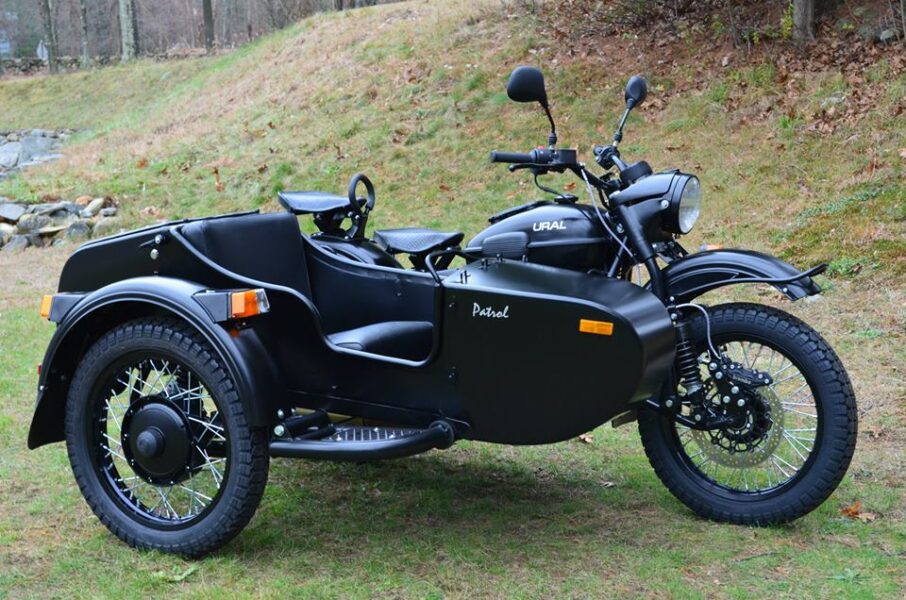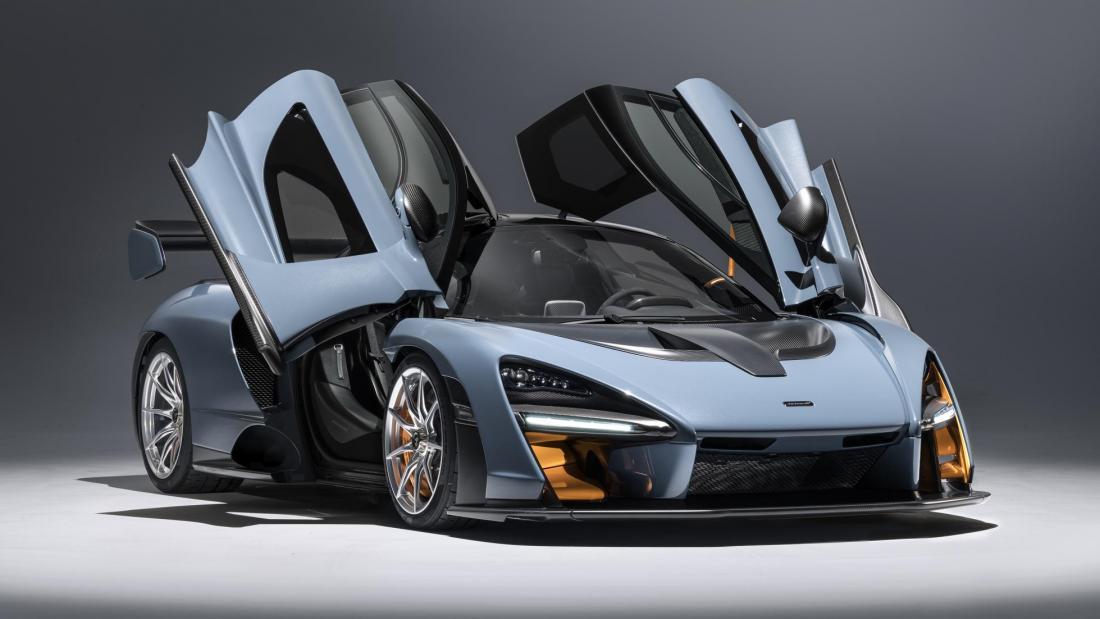
McLaren Senna. For 1 ton of car weight, there are 668 km of power!
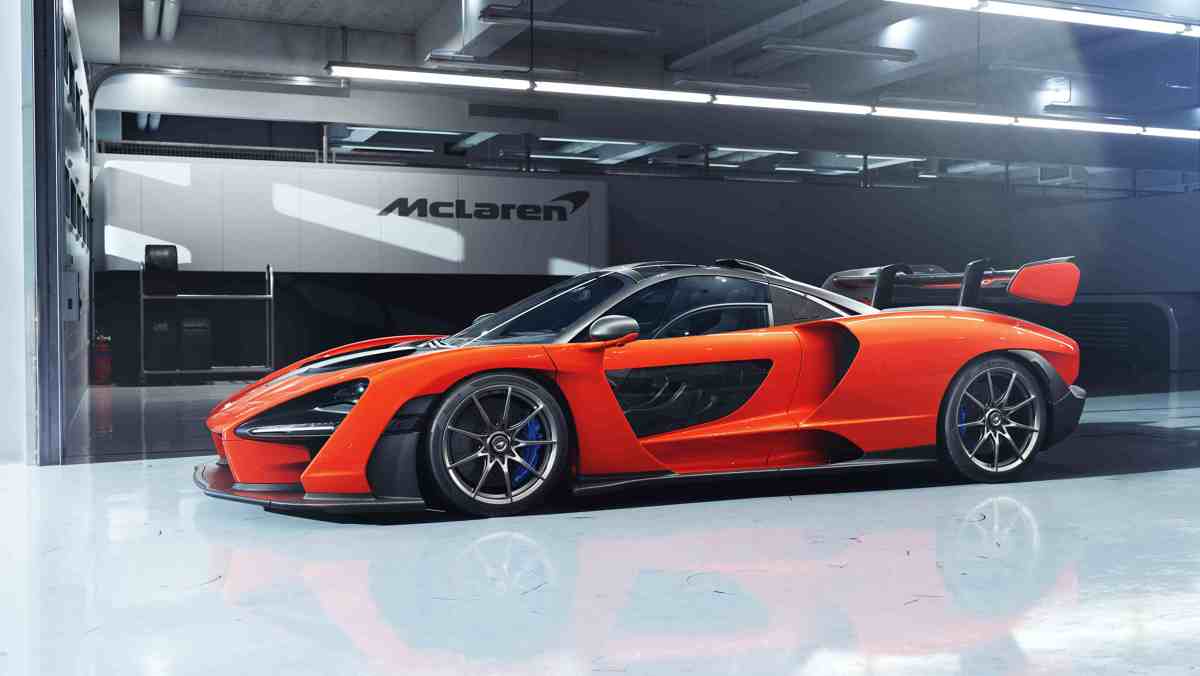 There was no other car like it and never will be. The title was reserved and production limited to 500 units. The supercar, which was supposed to immortalize the memory of one, but in fact two legendary racers, has already been sold, although the price reaches 4 million zł.
There was no other car like it and never will be. The title was reserved and production limited to 500 units. The supercar, which was supposed to immortalize the memory of one, but in fact two legendary racers, has already been sold, although the price reaches 4 million zł.
McLaren Automotive should run coquetry courses for ladies. In December 2017, she showed the McLaren Senna on the Internet, in March 2018 she gave it to touch in Geneva and soon declared that “sausage is not for dogs”, because all the planned 500 copies already have owners. She also did not forget to get rid of competitors. The right to use the name of the famous Brazilian woman in the name of the car was granted to her exclusively by the Ayrton Senna Institute in Sao Paulo. It is driven by the driver's sister Vivian Senna da Silva Lalli. As a result of legal and marketing efforts, a unique car was created, a kind of "monument of honor". Mostly Ayrton Senna, but not only that. The meeting of two names, McLaren and Senna, has a special meaning. Both riders in them had natural talent, both became Formula 1 legends and both died on the track. McLaren was 32 and Senna was 34. They were all brilliant in their own way, and Senna won his first F1 world title in 1988 driving a McLaren.
See also: Company car. There will be changes in billing
Three
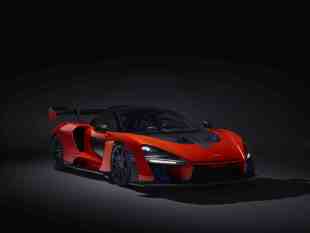 McLaren Automotive is part of the McLaren Group. It has been in operation since 2010 and has been designing and manufacturing sports cars. Other companies in the group are McLaren Applied Technologies, which researches and introduces new technologies into production not only in the automotive field, and McLaren Racing Limited, which runs the racing stable that started it all. It was brought to life by Bruce McLaren in 1963. Bruce was an exceptional figure, a man born "at the last minute." He envisioned a declining world of self-taught people who built their own cars and tested them for themselves. He tinkered with cars before races, and that's how he stayed. He didn't complain about the lack of good ideas, and he picked people well.
McLaren Automotive is part of the McLaren Group. It has been in operation since 2010 and has been designing and manufacturing sports cars. Other companies in the group are McLaren Applied Technologies, which researches and introduces new technologies into production not only in the automotive field, and McLaren Racing Limited, which runs the racing stable that started it all. It was brought to life by Bruce McLaren in 1963. Bruce was an exceptional figure, a man born "at the last minute." He envisioned a declining world of self-taught people who built their own cars and tested them for themselves. He tinkered with cars before races, and that's how he stayed. He didn't complain about the lack of good ideas, and he picked people well.
Master Duet
The McLaren stable is considered one of the so-called big three of Formula 1 along with Ferrari and Williams. He has eight world championships among constructors. However, before the advent of Formula 1, the team dominated Can-Am (Canadian American Challenge Cup) racing in the 60s. In 1968-1970, Bruce McLaren and his colleague from New Zealand Denny Hulme won two championship titles on them. Can-Am was a good school. At the time, the cars in these races were faster than Formula 1 cars. Can-Am cars used American V8 engines from Ford and Chevrolet. Formula 1 caused problems. Several engines were tried, but the three-liter V8 Ford Cosworth DFV proved to be the best. This is the M7A engine that Bruce McLaren used to win the 1968 Belgian Grand Prix at Spa. He also drove for the McLaren M23, which in 1974 secured the team's first and double victory in Formula One. At the same time, the company won its first world title among constructors, and Emerson Fittipaldi at the wheel of McLarenem became the world champion among pilots. That same year, McLaren took the lead in the Indianapolis 1 for the first time and repeated that success in 500.
The early 80s saw the dawn of Porsche's TAG engines. In 1988, the team switched to Honda engines, beginning a golden age. McLaren has won the World Constructors' Championship four times in a row, and drivers in its colors have been world champions four times: Ayrton Senna in 1988, 1990 and 1991 and Alain Prost in 1989. When Honda retired from Formula 1992 in 1, they were looking for a new engine. In the end, McLaren moved to Mercedes, but it was not so easy to win. In 2015-2017, the company returned to Honda, and in 2018, for the first time in history, chose Renault engines.
Spire
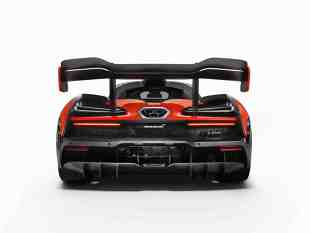 In the late 70s, McLaren retired from American racing and focused on Formula One. The company showed little interest in road cars. The exception was a 1 McLaren M6GT with an 1969 hp Chevrolet V370 engine. It was supposed to produce 8 units per year, but the death of Bruce put an end to these plans. The next supercar for the “ordinary caviar eater” had to wait until 250. Then the sensational McLaren F1993 appeared with a naturally aspirated V1 engine from BMW, developing 12 hp.
In the late 70s, McLaren retired from American racing and focused on Formula One. The company showed little interest in road cars. The exception was a 1 McLaren M6GT with an 1969 hp Chevrolet V370 engine. It was supposed to produce 8 units per year, but the death of Bruce put an end to these plans. The next supercar for the “ordinary caviar eater” had to wait until 250. Then the sensational McLaren F1993 appeared with a naturally aspirated V1 engine from BMW, developing 12 hp.
Each new road model is an event. McLaren is not "building an offer", but rather smoothes the tension. Since 2015, the company has been categorizing its vehicles based on their performance and ability to create amazing experiences. Each model is part of the Sport, Super or Ultimate series, as shown in the markings. Rounded numbers indicate horsepower. The exception is the Ultimate series, which has no extra parts. Just like the nameless shooter played by Clint Eastwood in Sergio Leone's Dollar Trilogy. McLaren Senna belongs to the Ultimate series.
Airy
Although it is adapted for driving on public roads, the designers wanted it to achieve the lowest possible lap time on the track. The name Senna obliges. Hence the low curb weight and aerodynamically modified body. The car literally sucks the road surface.
The base design of the McLaren Senna is the 720S.
See also: How to care for the battery?
It is the lightest McLaren model since F1 and the most powerful model developed to date, with an impressive power-to-weight ratio of 668 hp. per ton.
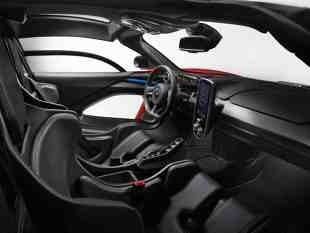 The carbon-fiber-built self-supporting body is based on the Monocage III's central space structure, which is 18kg lighter than the previously used Monocage II. Coverage is also reduced as much as possible. The front wing weighs only 64 kg! Materials that are heavier or less durable are in the minority. The engine rests on an aluminum subframe, the front shock-absorbing elements are also made of aluminum.
The carbon-fiber-built self-supporting body is based on the Monocage III's central space structure, which is 18kg lighter than the previously used Monocage II. Coverage is also reduced as much as possible. The front wing weighs only 64 kg! Materials that are heavier or less durable are in the minority. The engine rests on an aluminum subframe, the front shock-absorbing elements are also made of aluminum.
At first glance, the case consists mainly of holes. Most of them are important for component cooling, while others are important for aerodynamics and direct the air flowing around the car so that it presses it against the road surface. The faster this happens, the more difficult it becomes. The raised door has cutouts at the bottom. They are filled with hard, impact-resistant Gorilla Glass, known for making the best watches. The glazing does increase the weight of the door, but it makes the interior lighter, and on the track, it lets you see how close we are to the edge that can't be crossed. The “airy” style of the car corresponds to the optional rear glazing, through which you can see the mighty “eight” with a capacity of 800 hp. This is nothing more than a demonstration of power in all its glory.
The McLaren isn't as stretchy as a rollercoaster, but it's pretty close. Inside, a steering wheel and a flat multifunctional center panel stand out. A narrow bar of indicators shows only key information at the moment. Nothing interferes with the view, the designers say that the cockpit of the helicopter became their clue. Some of the switches are located under the roof, which is also borrowed from aviation. Bucket seats can be trimmed in leather or Alcantara. Upon request, a beverage delivery system is installed, as in F1 cars. Behind the seats there is space for two helmets and two suits, but one cannot hide the fact that the car was built around and mainly for the driver. The passenger is a burden, although screams of delight or fear can spur the rider to step up their efforts and improve lap times. I mentioned that Senna is the strongest McLaren ever. To be precise, this is the most powerful car with a traditional transmission. The hybrid P1 develops a total of 903 hp, of which 727 hp. for an internal combustion engine and 176 hp. for an electric motor. Senna may seem to a convinced ecologist only a step backwards. The designers deliberately chose one power source to save on the vehicle's curb weight. The Senna is 181kg lighter than the P1.
fame
 In Race mode, the body drops a little less than 5 cm. The majestic rear spoiler tilts at a steeper angle for even more downforce, but it can also "straighten out" when the driver wants to reach top speed in a straight line. Vertical movable flaps under the headlights stabilize the car and at the same time help to cool the engine.
In Race mode, the body drops a little less than 5 cm. The majestic rear spoiler tilts at a steeper angle for even more downforce, but it can also "straighten out" when the driver wants to reach top speed in a straight line. Vertical movable flaps under the headlights stabilize the car and at the same time help to cool the engine.
Brembo brakes with carbon-ceramic discs are enriched with a new material, which increases their resistance to overheating. As a result, designers could use smaller and lighter shields. Even the rims are thin, with only 9 spokes instead of 10. McLaren opted for Pirelli P-Zero Trofeo R tires.
The McLaren Senna gets name bonus points, as does the Bugatti Chiron. But he promises to be so good that he may not have to maintain credibility and earn his own nickname like "lambo" or "gullwing".
You know that…
In the McLaren Senna, 1 ton of car weight produces 668 hp. Impressive result!
For a set of high-performance tires for Senna, you need to spend about PLN 10 - Pirelli P Zero Trofeo R.
The spoiler takes part in the "control" of the car. It changes its position as needed: maximizing contact pressure or helping to achieve the highest possible speed in a straight line.
The wheels are secured with a "central lock", which is the equivalent of a single bolt used in the past.
The engine start button is located on the console under the roof. It is adjacent to the "Race" mode switch and the windows down keys.
Commentator – Myhal Kiy, journalist
It is full of legendary cars. Some earn their reputation, others are initially designed as "legendary". McLaren Senna belongs to the latter. He uses the myth of one of Formula One's most talented drivers to become a myth himself. There is a principle that became the title of a book by marketing guru Jack Trout: Stand out or die. McLaren can't afford cars that aren't talked about. Of course, technical excellence "speaks for itself", but in the world of supercars this is not enough. Bugatti remembered Louis Chiron, who enjoyed success in the 1s, McLaren reached out to a man whose memory is still alive. Senna is the tragic hero of the "young generation". The patron of a car built by a company that is also "young" suits him.
